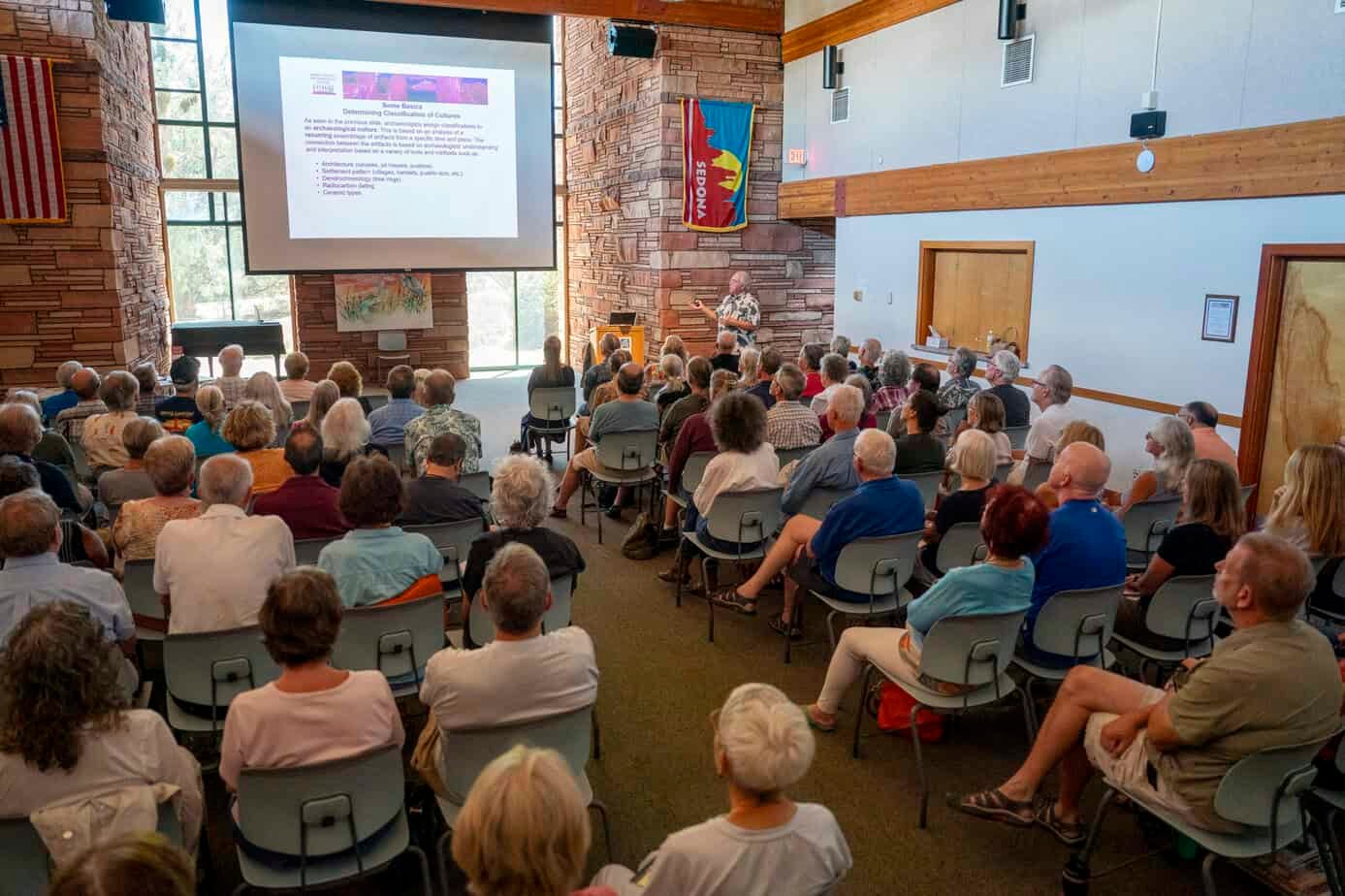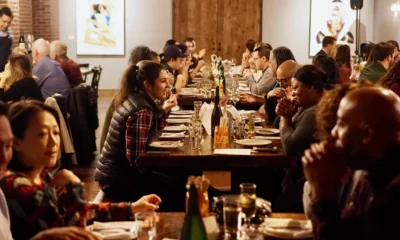Entertainment
Ken Zoll Unveils Groundbreaking Insights on VV Archaeology

On August 17, Ken Zoll, the executive director emeritus of the Verde Valley Archaeology Center and Museum, delivered a notable presentation at the Sedona Public Library, examining the archaeological history of the Middle Verde Valley. He indicated that it might be his final public lecture on this subject, originally crafted for Northern Arizona University’s Road Scholars program, which is undergoing changes.
“I want to start moving on to other things,” Zoll remarked. He expressed a desire to reconnect with painting—a passion from his days in Chicago—and to explore music again, having recently picked up his trumpet for personal enjoyment. “I’m getting up there in age and it’s time to just do what I like to do,” he added.
Zoll’s artistic works typically feature vibrant landscapes painted in oil. His recent return to jazz music came as a surprise after years away from his first love. “I played in a band during college and then sold my trumpet to buy my wife’s wedding ring,” Zoll shared, celebrating 54 years of marriage with his wife, Nancy. Recently, a retired friend gifted him a trumpet, igniting his musical passion once more. “It’s freeing and expressive,” he said, reflecting on his renewed enjoyment of playing.
During his lecture, Zoll highlighted the contributions of Dr. Edgar A. Mearns, the region’s first archaeologist, who explored the Verde Valley between 1884 and 1888 for ornithological studies. Mearns was also known for being the first to document significant archaeological sites, such as Montezuma Castle, and compiled his findings into a book, ‘Ancient Dwellings of the Rio Verde Valley,’ published in 1890.
Historical records note that Mearns observed, “Upon my first visit in 1884, it was evident that nothing more than a superficial examination had ever been made.” His thorough investigations led to the discovery of significant artifacts untouched for centuries.
Zoll also brought attention to Cosmos Mindeleff, another critical figure influenced by Mearns. As a surveyor with the Bureau of Ethnology, Mindeleff was the first to scientifically document cavate structures in the region, which are human-made dwellings hollowed from cliffs. His work laid the groundwork for future archaeological understanding.
Mindeleff first arrived in Arizona in 1890 and soon recognized the potential of the Verde Valley’s archaeological sites. He later documented the Mindeleff Cavate Lodge Group, consisting of 98 cavates with 367 rooms near Beasley Flat Day Use Area.
Additionally, Zoll acknowledged the often-overlooked contributions of women in archaeology, citing Dr. Nancy J. Parezo’s research that suggests many female partners of archaeologists were instrumental in data collection and documentation.
In 1895, Jesse Walter Fewkes, invited by the Smithsonian Institute, conducted significant archaeological expeditions, publishing his findings on sites spanning from Oak Creek Canyon to Prescott. His work focused on vital cliff dwellings inhabited by the Sinagua culture, ancestors of the Hopi.
The Sinagua left the Verde Valley around 1450 CE. While some Hopi clans trace their lineage back to this group, connections to other tribes like the Pima and Zuni exist, highlighting the complex historical narrative of the region.
Zoll concluded his presentation by announcing his intent to continue educational programming at the Crane Petroglyph Heritage Site, although he will no longer actively seek out speaking engagements. He expressed a commitment to fostering knowledge about archaeology while embracing new personal pursuits.

















